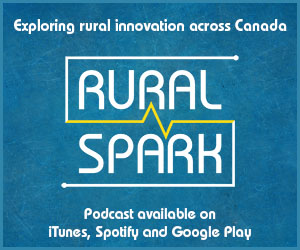ST. MARY’S – For the second time in as many months, at least one councillor for the Municipality of the District of St. Mary’s has been left with more questions than answers about the expected economic benefits of the proposed Cochrane Hill gold mine near Sherbrooke.
“This seems to be a hard tooth to pull,” Warden Greg Wier told a representative of St Barbara’s Atlantic operations at the conclusion of her presentation to council’s committee of the whole on July 6. “I got to see the numbers.”
Earlier this spring, Wier expressed disappointment with a letter he’d received from Laird Brownlie, St Barbara’s head of external affairs for Atlantic operations, which declined to specify jobs and compensation at the prospective mine. “We received back some possible job descriptions for the mine project, but no number of how many of each and no wages associated with them,” he told the May 18 committee of the whole meeting.
“I can see where they wouldn’t be able to tell us exactly about what’s going on with Cochrane Hill because it’s not even open yet,” Wier said, “[but] I’d asked [if it was] possible to give some jobs [numbers] and some pay scales … [They say] they’re ‘looking forward to working with us’ to give us more information.”
In her 30-minute talk to council last week, St Barbara’s Community Engagement Specialist Shannon Ashe-Fox emphasized the long-term jobs impact of the project, still years away from operation. “Investments and spending totalling $565 million are expected to be made over a 15-year project lifecycle,” she said, noting that annual salaries at the mine – which is not scheduled to begin production until at least 2026 – would likely vary between low entry-level to as high as $100,000.
Reading from a prepared report, she said, “The first set of jobs are the opportunities with on-the-job training. Here, we could essentially take any Grade 12 students coming out of high school – or any folks in the community with no experience who wanted to do some career changing – and [give them] training and experience.”
Other jobs would require community college and/or university degrees. “It’s worth noting that a lot of these sort of previous experience things, you normally would see [among] mid-career folks, people who have the management experience, that sort of thing,” she added. “The wages would go up with the more experience [you have].”
Ashe-Fox also addressed the question of potential economic spin-offs from the mine, acknowledging that council was under the impression that St Barbara had claimed, earlier this year, that the mine would “increase” retail services in the area by $8 million. “I went back to the committee of the whole presentation that happened Jan. 28, and I looked at the minutes there and I couldn’t see any reference to an $8 million,” she said. “So, I had a look through [the] reports, and the only thing I could find that was even close was the indirect effect on the province … of $7.8 million … as a whole. That’s probably what that was referring to.”
Still, she said, “We welcome ideas for local opportunities that help the infrastructure and the commercial capacity of the community grow and get renewed.”
Wier concluded: “You are [also] saying that everything is based on [paying] an average wage, and I want to see where that [number] comes from. I got to see it on paper. I don’t believe what anybody tells me until I can figure out with paper and pen … Thank you very much for your presentation. I look forward to some additional information.”








